The sun is setting on our Fortune beach Boil-Up in Newfoundland, Canada.
We sip our tea from patterned china cups, looking out at the lapping waves, and Brian tells us this is the second cup of tea he’s ever drunk in his life.
“I never really thought I’d like the taste of tea – but it’s actually quite good!”
Brian Rose is a man who wears many hats. He’s lived in the tiny town of Fortune in Newfoundland & Labrador for most of his life, and is so proud of his hometown that he’s always planning new ways to attract more tourists. Brian runs the Fortune ferry offices, which shuttle passengers back and forth from the nearby French islands of Saint Pierre and Miquelon each day. He owns the Fortune Hotel, which welcomes visitors venturing to the Fortune Head Geology Centre.
And now this native ‘Fortuner’ is branching out into his next endeavour: taking guests on ATV tours along the stunning coastline.
What was I doing in Fortune, Newfoundland?
The town of Fortune, on the southern tip of the Burin Peninsula, is about 360km from Newfoundland’s capital city of St Johns. It’s set in a valley, with water on both sides, and like many places in Newfoundland it was hugely affected by the cod moratorium in 1992 and the earlier resettlement program of the 1950s.
Unfortunately, I’d never heard of either of these crucial elements in Canada’s history before arriving in Newfoundland. Yet I quickly realised that both events have significantly shaped the lives and culture of modern-day Newfoundlanders: it’s the reason why communities were split apart, businesses dried up, and places were left empty and abandoned.
By the time we made it to Fortune, Kim and I had been exploring Canada for a week, driving our way across the province of Nova Scotia before catching a flight to Newfoundland and Labrador. We’d spent a few days in St John’s and left early that morning to drive four hours across the island.
It meant our journey to Fortune and its sister town of Grand Bank was our first real experience of Newfoundland.
Our first stop: arriving in Grand Bank, Newfoundland
Before meeting Brian in Fortune, we stopped off in nearby Grand Bank where we were spending the night: a town which immediately felt unusual to us both.
The landscape of this place was flat and empty, like a windswept beach. There were virtually no people on the streets – and although our quiet guesthouse, the Thorndyke Inn, had no staff around, there were two young builders walking across the roof instead, hammers and tape measures in hand.
Unsure where to go, we headed for the Provincial Seaman’s Museum, an angular and stark white building with a large mural on the wall which faced the street.
As we stood and looked up at the mural, an echo shivered through a hollow metal flagpole while its flag hung taut in the buffeting wind. It sounded like a strange kind of music. The gulls squawked, and I felt a chill skate across my skin.
There was an undeniable sense of anticipation. As if life was lived on some kind of edge out here.
Embarking on an ATV tour along the Newfoundland coast
We drove onwards to Fortune in order to meet Brian at the ferry offices for 3pm. Brian was red-faced, dressed in an orange shirt and cargo shorts, with an immediate question on his lips: “Would you ladies like me to pick up some beers for later?”
We drove behind Brian’s car, heading out of Fortune and into the countryside before eventually arriving at a covered ATV vehicle outside Brian’s house. He’d already packed it full with cooler bags and large bottles of water.
We added our own bags into the mix and clambered inside. I’d only ever ridden ATVs during off-roading trips – through desert sand dunes in Peru, for example – and those experiences are high paced and adrenaline fuelled. I wasn’t sure if that kind of trip was on the cards for Newfoundland!
But Brian’s ATV tour style was entirely different. He drove us through tall grass which towered over the vehicle’s framework, flinging his arm towards a variety of plants on either side.
There were clusters of pitcher plants, the carnivorous bell-shaped plants with pitfall traps. There were blueberry bushes, their fruits not yet ripe. There were bright purple petals known as fireweed – “it’s like caviar for honey bees,” Brian told us.
We moved further along a bumpy track until the cliff edge opened out beside us. Across the water was a thin stretch of flat land: Brunette island, the largest island in Fortune Bay. Once home to a small fishing community, Brunette island was resettled in the 1950s and now lies totally abandoned.
Brunette Island is a magical place for Brian. Occasionally he sails there with his teenage son: their friends drop them off with bags and drinking water in the afternoon and don’t return until the next morning.
When Brian spoke about the solitude of those overnight camping trips – the sense of space, the calm, the quiet – his eyes shone. It was fascinating, because it seemed at odds with his clear desire to bring more visitors to this part of Atlantic Canada.
Foraging for cloudberries and bakeapples
Approaching a large field, we saw two figures wandering in the distance. Brian practically leapt from the ATV — “Quick! Before they pick them all!”
‘Them’ turned out to be cloudberries, an amber-coloured fruit with a sharp tang. These tiny jewel-like berries have a myriad of other names: salmonberries, yellowberries, and bakeapples. The latter is a quintessentially Newfoundland & Labrador term – and this part of the province is famous for them.
We stopped the ATV and stepped out into the peaty moss land. I took care not to tread too heavily, cautious of squashing what I assumed were a finite number of cloudberries. But within moments I realised the entire field was covered with these tiny bursts of amber fruit, and I set to picking.
Eventually we reached the two figures who’d stopped their foraging to greet us. Wayne was with his niece from Toronto, who visits a few times each year – “and always now,” she said, “when we can pick berries.”
We stood in a little huddle as the wind whipped my hair across my face. Wayne grinned throughout our conversation: a Fortune man in his 70s, his thick Newfoundlander brogue meant I understand one word in ten. Brian’s accent changed when he spoke to Wayne too. It sounded like water.
The next hour saw us driving through wide open fields and down rocky gullets before eventually arriving at the empty house of Brian’s friend. We settled on the patio, cracked open our beers and soaked up the afternoon sunshine while delving into a surprisingly complex set of conversation topics: politics, tourism, the concept of home and what our origin stories mean to us.
And then we headed down towards the sea.
A Newfoundland Boil-Up on the beach
The ATV shrugged and jolted over wide flat stones, making a wide berth of the shoreline. When the vehicle pulled to a juddering halt, we jumped out to scavenge for driftwood.
Brian found an overhanging rock and began to construct a fire, slotting the wood together. He nestled a green pea can, its edges threaded with strong wire as a makeshift handle, into the fire, and then carefully poured a slug of fresh water inside.
He could have boiled our tea in a kettle – but, he explained, “I wanted it to be authentic.”
In the open flatbed of the ATV truck, Brian twisted the lids of jars filled with homemade jam – one of rhubarb and one of strawberry, both made by his Aunt Jean. He unpacked a tiny tupperware container of sugar; unwrapped fresh tea buns gifted by his mother that morning; carefully pulled bunched up paper towels from inside three china cups with painted details on the rim.
“This is essentially a Boil-Up,” he told us – a quintessential Newfoundland tradition where people gather on the beach for an outdoor picnic in a rural landscape.
As the woodsmoke continued to rise, we collected flat rocks to act as plates, spread the scones with fresh butter and even fresher jam, and Brian poured out the tea from its can.
We clinked our china cups together and sipped. The hot tea tasted delicious – almost as if it was flavoured with woodsmoke.
Sunset at Fortune Head Lighthouse
Once Brian learned that both Kim and I had a particular love for lighthouses, we decided to pack away our boil-up gear and drive to the Fortune Head lighthouse in time for sunset. “Fortune Head is the only place in North America where you can see the sun setting on France!” he told us with pride.
Up at the lighthouse in the fading light and amidst a suddenly strong wind, I breathed in the crisp air and gazed across the water to the French islands of Saint Pierre and Miquelon. I wondered if their lives were anything like the one Brian enjoyed in Fortune.
Kim wandered off to take photos of the lighthouse against the setting sun and Brian beckoned to me. “Come here!” he whispered, indicating to the very edge of the cliff. “Listen!”
Amongst the sound of the gulls, I could hear water swishing back and forth over the jumbled collection of rocks far below us. It was so simple, but from the expression on his face it was a sound that Brian adored.
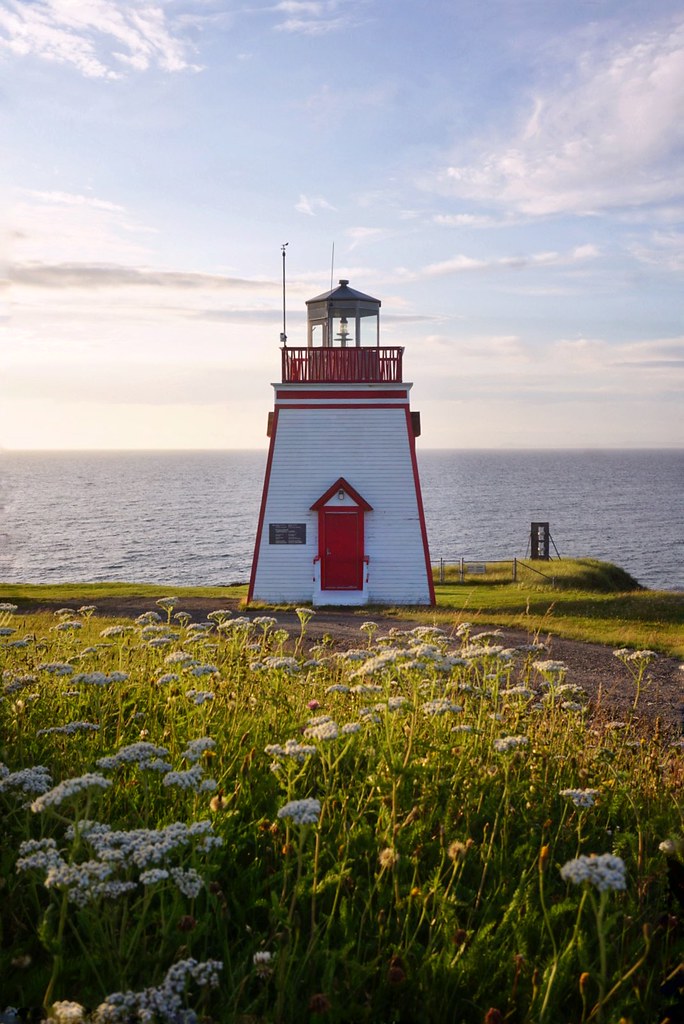
What’s next for Brian Rose, the man of Fortune?
The tiny town of Fortune may not receive hordes of visitors each year, but the place nonetheless exemplifies what rural Newfoundland is all about: simplicity, community, and a connection to nature.
Brian is acutely aware of what Fortune has to offer, and he already has bright ideas for the future of his ATV tours. He wants his guests to make crafts with old fishing ropes, courtesy of his fisherman friend; to go foraging in the fields with Wayne; to use the foraged fruits to make jam with his aunt Jean – different jams depending on the seasons, of course.
But hopefully the boil-up on Fortune beach will always be a part of the experience. It’s probably one of the most special memories I have from my fortnight travelling through Atlantic Canada – and as Brian pointed out to us, “You’ll never have a cup of tea that tastes better.”
He was right.
Pin this article if you enjoyed it!
NB: the majority of these photos are by Kim Leuenberger (except for a couple of my own which I snuck in). This trip was in paid partnership with Newfoundland & Labrador Tourism, but my immediate love for Brian’s newest venture is all my own. If you happen to be in Newfoundland, I highly recommend driving four hours from St Johns to Fortune, booking Brian’s tour and enjoying the best cup of woodsmoke tea you’ll ever drink!







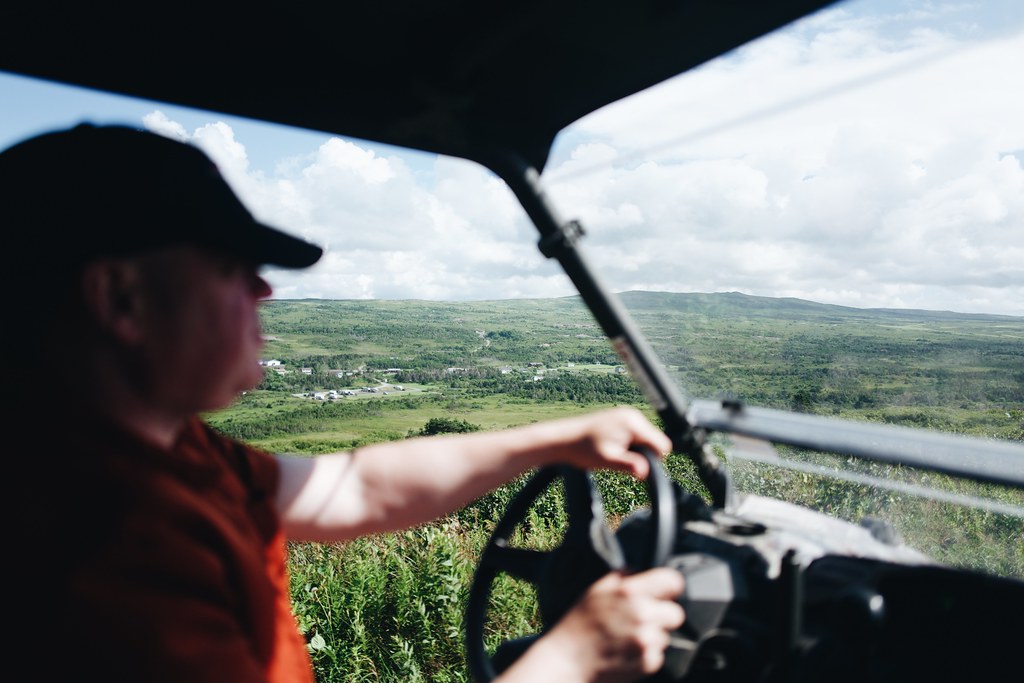





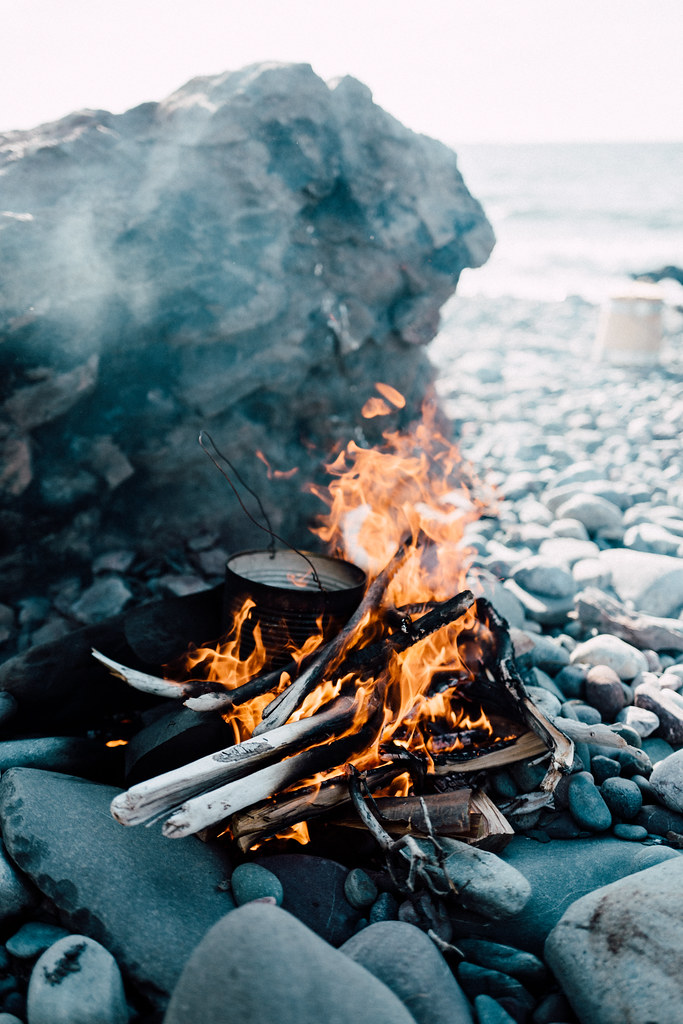




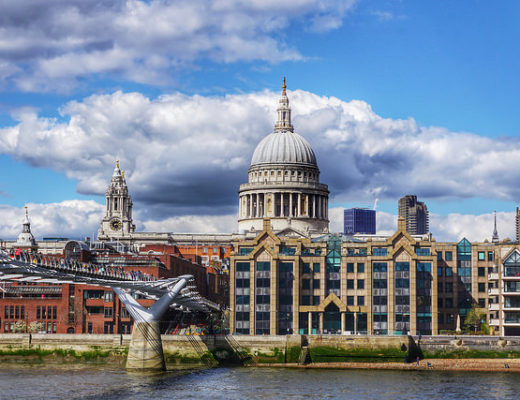
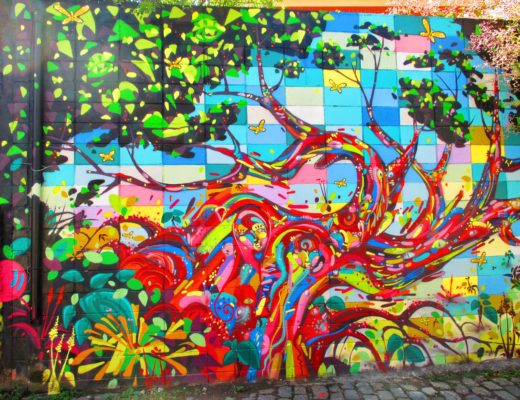
No Comments